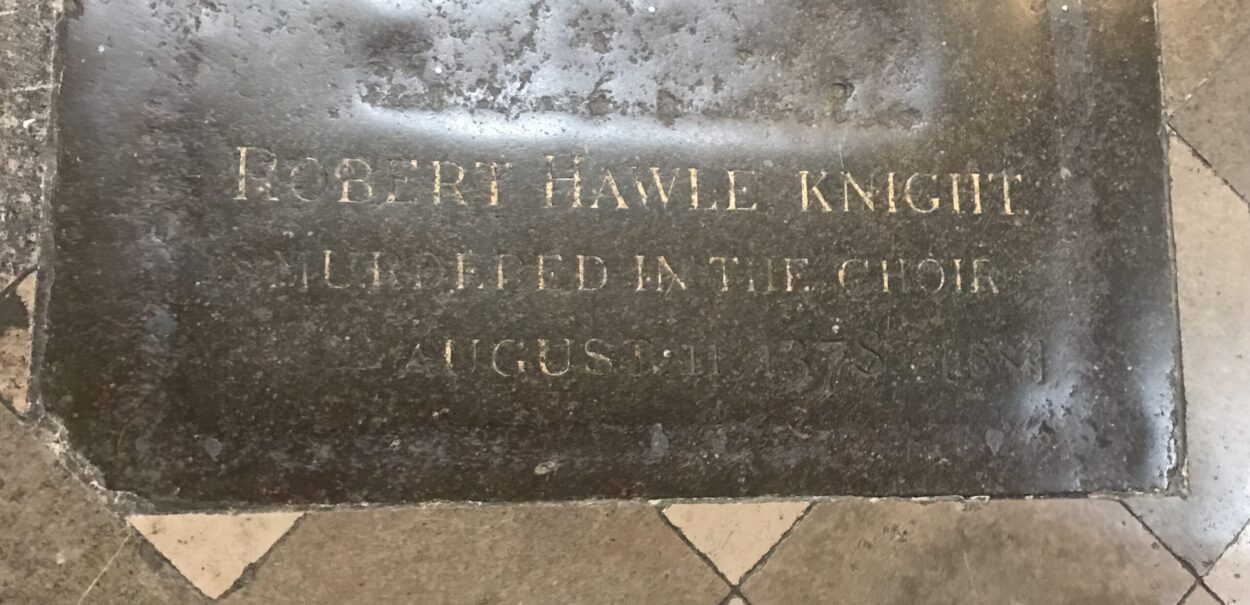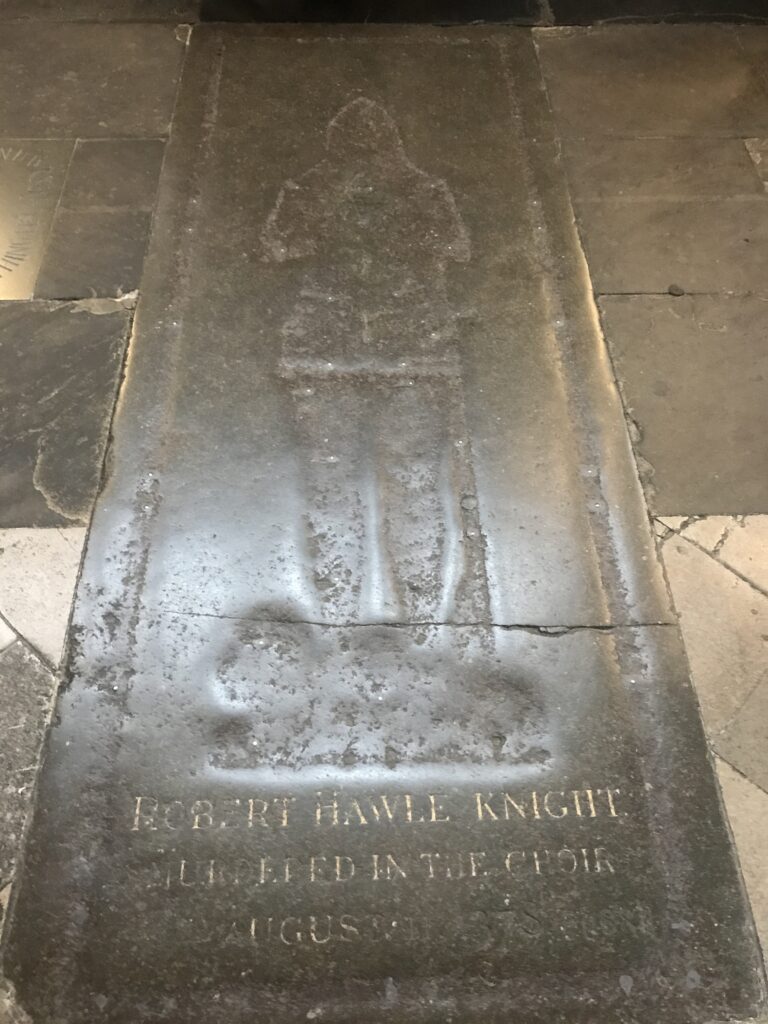
One of the great things about Westminster Abbey is that it is almost impossible to tire of the place. Yes, it can be a bit trying when it’s packed to overflowing with guided tours and hordes of other visitors lost in their audio guides, but then the sunlight will suddenly shine through some upper windows and even a cynical old grump like me will be overcome with the beauty of the place.
And it is constantly surprising. Today I noticed for the first time the floor tomb of Robert Hawle, “murdered in the choir, August 11, 1378”. Wait, what?
Hawle (more commonly Robert Hauley) was a squire and had captured the Count of Denia at the Battle of Najera in 1367. This was part of the Castilian civil war, which had become a proxy conflict in the Hundred Years War, one faction supported by the English (represented by the Black Prince and John of Gaunt), and the other by the French.
In medieval warfare great riches could accrue as ransom money paid for the release of captured noblemen and Hawle (and a fellow squire John Shakel) were dreaming of a big payday.
The Count had given his son as a hostage (again, par for the course in the middle ages) as he worked on getting the huge ransom paid, but ten years later (ten years!), the matter had not been resolved and shifting alliances and political struggles intervened.
Shakel and Hawle were ordered to hand over their hostage by John of Gaunt (uncle to the boy-king Richard II and a claimant to the throne of Castile), and when they refused, they were imprisoned in the Tower.
After escaping, they claimed sanctuary in the Abbey, which should have given them safety from arrest by the civil authorities, but, during a mass, the Constable of the Tower raided the church with 50 armed men. Shakel was rearrested, but Hawle resisted and he (and a monk) were killed.
The intrusion by the Constable and his men was sacrilege, the killing double so, and all involved were excommunicated. As the Abbey had been desecrated it was reconsecrated some four months later.
Hawle’s grave is in the South Transept, bordering on Poets’ Corner. An imprint remains of what would have been a brass image of a man in armour, a sword by his side and a lion at his feet. The inscription is from the 19th century, the original latin having read “in this renowned refuge of piety … [I]… felt the death-dealing swords”.
The Abbey’s page on the grave is here.


